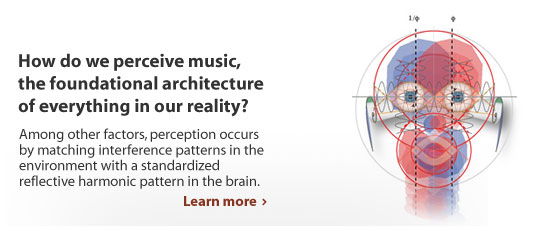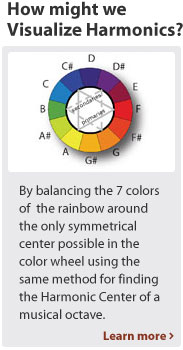Music Theory - Introduction
The central question in music education and theory is how do musical scales, intervals and chords combine to create a sense of anticipation and resolution, or tension and release. Parallel to this discussion is what causes some intervals to sound pleasingly concordant while others are perceived as gratingly dissonant. These are the fundamental questions of music perception that have yet to be answered.
Whether hidden in religious embrace, dismissed by artistic opinion or left behind by the scientific revolution, the underlying principles of music perception remain a thing of complete and utter mystery at the dawning of the 21st century. Modern music pedagogy, with its textbooks and theory curriculum, continues to incorrectly describe harmony using asymmetrical nomenclature based upon layer after layer of unquestioned tradition descended through the Roman Catholic Church. As a result, our knowledge about music remains quite limited with no universally consistent theoretical model for use in the classroom.
With the exception of the small field of experimental psychology investigating music cognition, contemporary science continues to shun the serious study of music. The avoidance of any unifying field of harmonic science has left music and any derivative natural philosophy as a humanities project. We might reasonably wonder why the scientific community continues to ignore something so immediately accessible and universal as how we perceive musical scales and harmonies. Outside of Church tradition, what else could be keeping our most inquisitive minds from seriously investigating music perception and developing a new theory of music founded upon it?
Learn how Harmonic Interference Theory is able to explain how and why our senses were formed!












